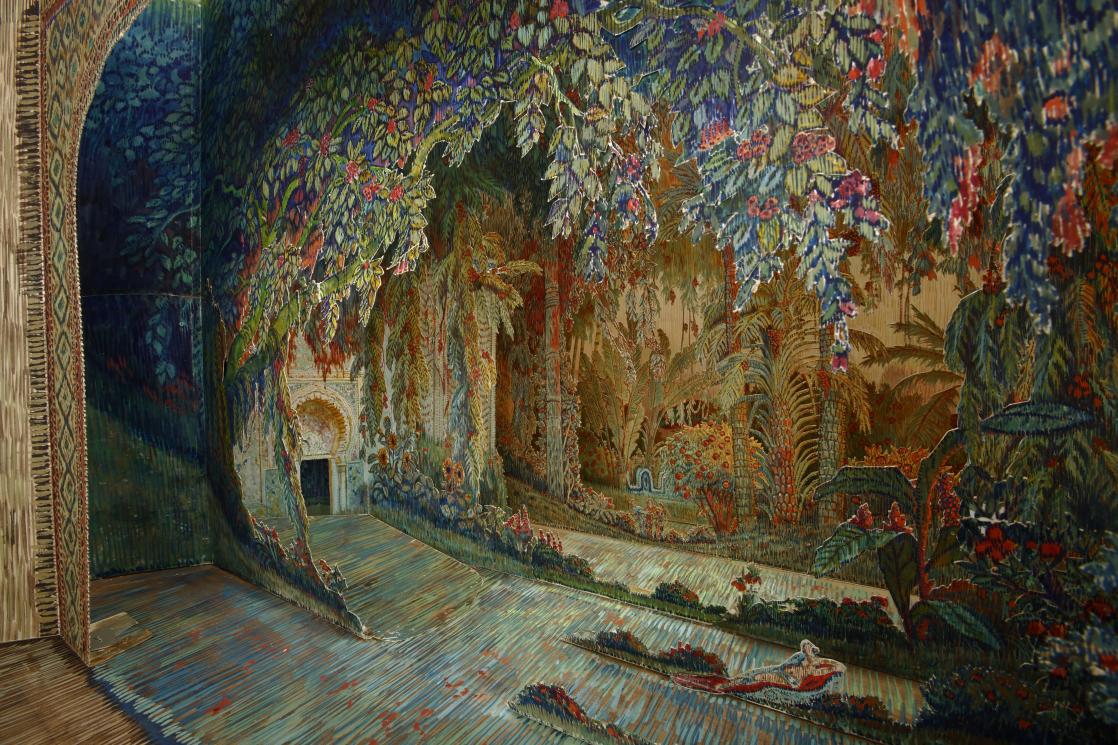Wagner in the Dawn of Fantasy
The work of Richard Wagner has had a great influence on fantasy writers. So much so that some of his operas, notably those comprised in The Ring of the Nibelung, can be considered as a prefiguration of the genre.
Orchestral and Choral Power
Classical music is omnipresent in fantasy films, often featuring symphonic pieces performed by major orchestras. The power thus produced recalls the epic aspect of many works of the genre, where war and the struggle between Good and Evil are central.
From the very beginning, one notices the strong presence of singing on many soundtracks. The musical setting of J.R.R. Tolkien's elven verses Namárië in Poems and Songs of Middle Earth (1967) recalls medieval Gregorian chants, no doubt to give the melody an antiquated tonality. Similarly, the adaptation of 13th century poems (the Carmina Burana) by Carl Orff in 1935, served as the foundation for numerous film soundtracks, based on a powerful chorus and a Latin chant, characteristics found for example in the music of Conan the Barbarian (1982) by Basil Poledouris, and which accentuate the antiquated and strange, but equally familiar sound of the composition.
The Gift of Fury
Album: Conan The Barbarian - Original Film Soundtrack
33 rpm vinyl, LP
BnF, département de l’Audiovisuel, SD 30-72308
© MCA Records, 1984
The Ring as a Pioneering Work
It was opera, particularly that of Richard Wagner, which served as the fundamental inspiration for composers of fantasy film music. There are several reasons for this phenomenon. First of all, part of Wagner's work, (composed in the second half of the nineteenth century, when the Pre-Raphaelite Brotherhood was asserting itself in England), could be regarded as an early foray into fantasy, insofar as it rewrites medieval myths. This is particularly true of The Ring of the Nibelung (first performed in 1876), a cycle of four operas (also called The Ring) inspired by tales from Norse mythology, and whose text also echoes contemporary events (notably industrialization and the revolutions of 1848). This tetralogy also heralded the advent of multimedia fantasy worlds at the end of the 20th century. The Ring was conceived by Wagner as a total work of art ("Gesamtkunstwerk" in German), which mixes all media, from the image (the scenery) to the text (the booklet), through music and architecture (the Bayreuth Festival Palace was built specially to host the tetralogy).
Moreover, although Tolkien explicitly rejected any idea of comparison between his work and that of Wagner, there is a close relationship between the German composer's tetralogy and the trilogy of The Lord of the Rings: several similar sources (the Volsungä Saga for example) that the two authors rewrote; work on different media (Wagner and Tolkien mixed text and sound, one with music, the other with philology); central presence of the ring, fascination for the end of times; and criticism of modernity. Those who were inspired by the author of The Hobbit made no mistake. For his film Excalibur (1981), which was originally intended to be an adaptation of The Lord of the Rings, John Boorman used many pieces from Wagner's operas, particularly Siegfried's "Funeral March" written for The Twilight of the Gods, the fourth opus of The Ring.
Le Crépuscule des dieux
Richard Wagner (1813-1883), composer
1929
2 x vinyl: 78 rpm, 30 cm
BnF, département Audiovisuel, NCOdeon123634-123635(V1_2)
© Bibliothèque nationale de France
Wagner's Leitmotif and Tuba
Fantasy film music also owes a lot to the German composer, and in particular to the concept of the leitmotif that he popularized with The Ring of the Nibelung, where each major character is associated with a theme. John Williams, for the soundtrack of Star Wars, but also Howard Shore, for the soundtrack of the film adaptation of The Lord of the Rings, make widespread use of this technique, sometimes to the point that these works can resemble opera. In fact, Shore quoted directly from The Twilight of the Gods at the end of his composition for The Return of the King (in the piece "Days of the Ring"), as if Peter Jackson's trilogy should end on a theme that had also brought Wagner's cycle to a close. The last nod to the German musician was the use, by both Williams and Shore, of the tuba he had made especially for The Ring. This "Wagnerian" tuba has a more muted sound than the classical tuba in order to evoke a horn, an instrument associated once again, through The Song of Roland, with medievalist imagery and the great epics that constitute some of the favorite foundations of fantasy.
Days Of The Ring
Artist: Howard Shore
6 x vinyl: 33 rpm LP + 1 brochure + 1 card
BnF, département de l’Audiovisuel, SD 30-161496
© Warner music, 2018
